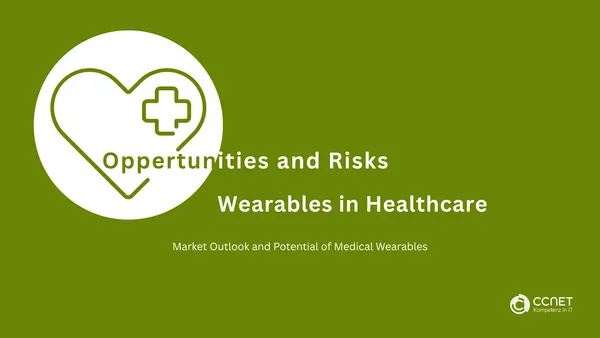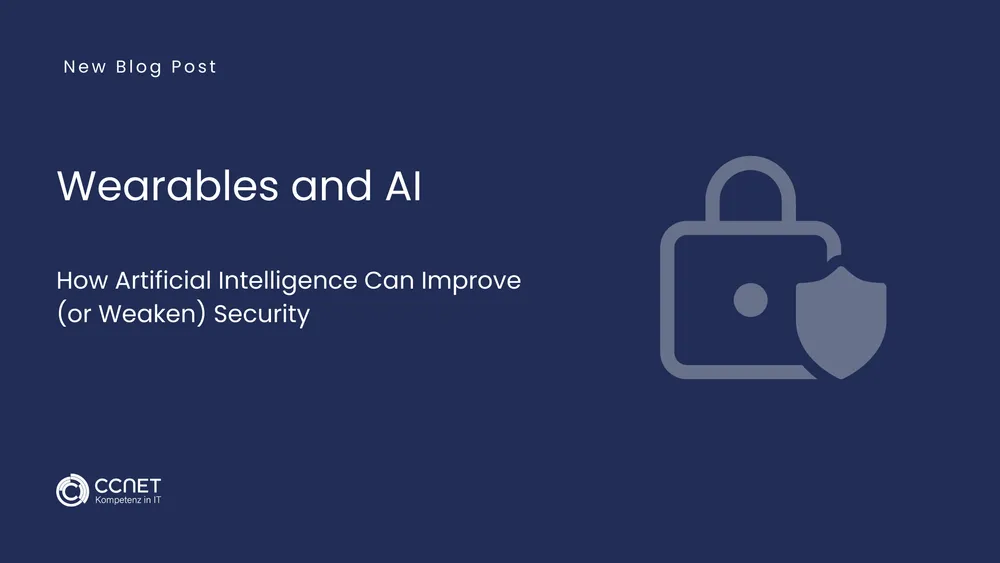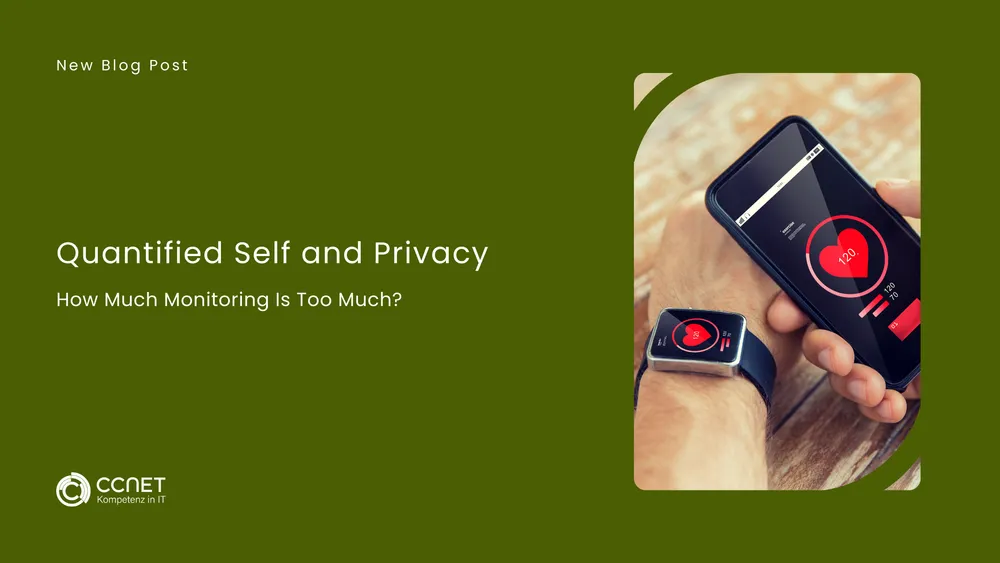
CCNet
Jun 2, 2025 • 2 min read

Wearables in Healthcare: Opportunities and Risks
Digitalization has long since reached the healthcare sector. Wearable technologies—so-called wearables—enable continuous monitoring and analysis of health data. From smartwatches and fitness trackers to medical sensor technologies, the market for wearable health devices is growing rapidly. However, while these technologies offer significant benefits for prevention, diagnosis, and treatment, they also introduce new risks—particularly in the areas of cybersecurity and data protection.
Opportunities of Health Wearables
Wearables are revolutionizing the way health data is collected and utilized. They allow for early detection of health issues, optimize patient care, and provide users with valuable insights into their physical condition. Especially in the field of telemedicine, they make an important contribution: real-time data can support better decision-making by doctors and improve the quality of care.
-
Early Diagnosis: Continuous monitoring of vital signs such as heart rate, blood oxygen level, or sleep quality can detect potential health issues at an early stage.
-
Personal Health Optimization: Users receive data-driven recommendations to improve their well-being and fitness.
-
Medical Support: Particularly for chronic conditions, wearables help monitor patients' health status more effectively.
-
Emergency Detection and Auto-Notification: Some devices can detect critical conditions such as falls or heart arrhythmias and alert medical staff or relatives automatically.
Risks and Challenges
Despite their many advantages, health wearables pose significant challenges—especially regarding data privacy and IT security. Sensitive health data is processed via mobile apps and cloud services, often without sufficient protection.
-
Privacy Risks: Health data is among the most sensitive personal information. If not adequately protected, it can be accessed or even misused by unauthorized parties.
-
Cybercrime Vulnerabilities: Wearables are often connected to the internet and other devices, making them potential targets for cyberattacks. Poorly secured devices can serve as entry points for hackers.
-
Insecure Data Transmission: Many wearables use Bluetooth or Wi-Fi to transmit data, which can create security gaps—especially when encryption or authentication is not properly implemented.
-
Misinterpretation of Health Data: Users might rely on incorrect or manipulated data, which could lead to poor medical decisions.
Conclusion: The Need for Security Measures
For health wearables to reach their full potential, robust security measures are essential. Manufacturers must integrate IT security into their devices from the start, and users need to be aware of the potential risks and take appropriate precautions. Regulations and standards play a crucial role in ensuring security and data protection in digital healthcare.
Wearables offer great opportunities for the healthcare sector—but only if security and privacy are prioritized. The next challenge lies in combining innovative technology with strong safeguards to enable responsible usage.
FAQ about wearables
What advantages do wearables offer in healthcare?
Wearables enable early detection of health problems, support chronically ill patients, and improve patient care through continuous data collection.
How do wearables help with emergency detection?
Some wearables detect critical conditions such as falls or cardiac arrhythmias and automatically notify medical personnel or relatives.
What are the data protection risks associated with health wearables?
Health data is considered particularly sensitive. If it is not adequately protected, it can be viewed or misused by unauthorized persons.
Why are wearables vulnerable to cyberattacks?
Their connection to the internet or other devices creates vulnerabilities, especially if security measures such as encryption are lacking.
What are the risks of data transmission with wearables?
ransmission via Bluetooth or Wi-Fi can have security gaps, especially if authentication or encryption procedures are not followed.
What is the danger of using incorrect health data?
Users could rely on incorrect or manipulated data, which could lead to wrong medical decisions.
What measures are necessary to use wearables safely?
Technical security precautions must be taken and data protection standards must be adhered to, both by manufacturers and users.


